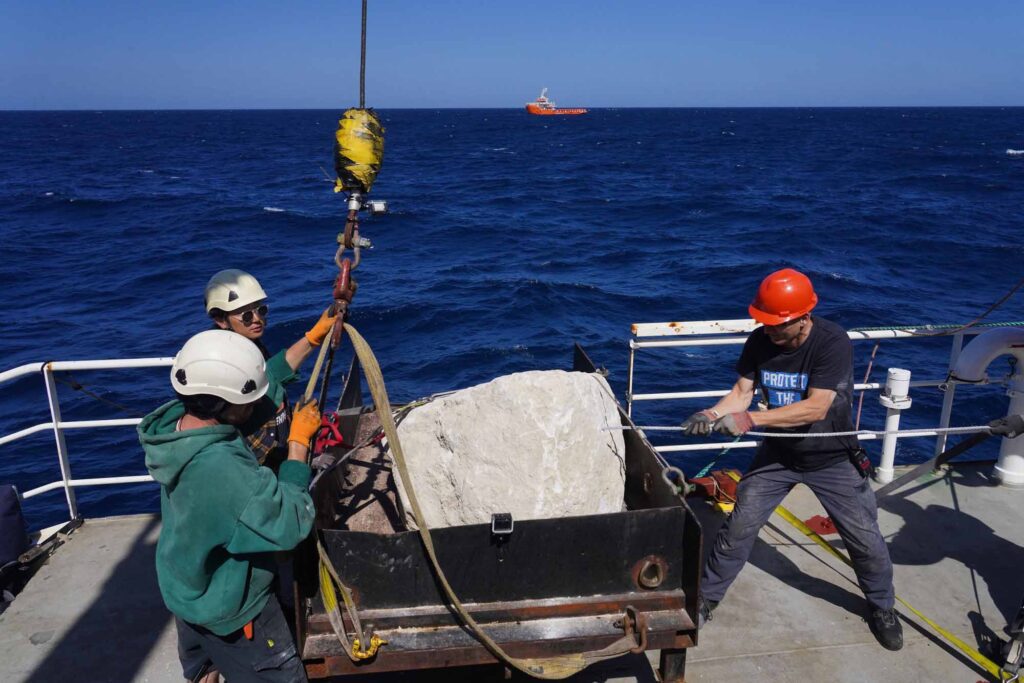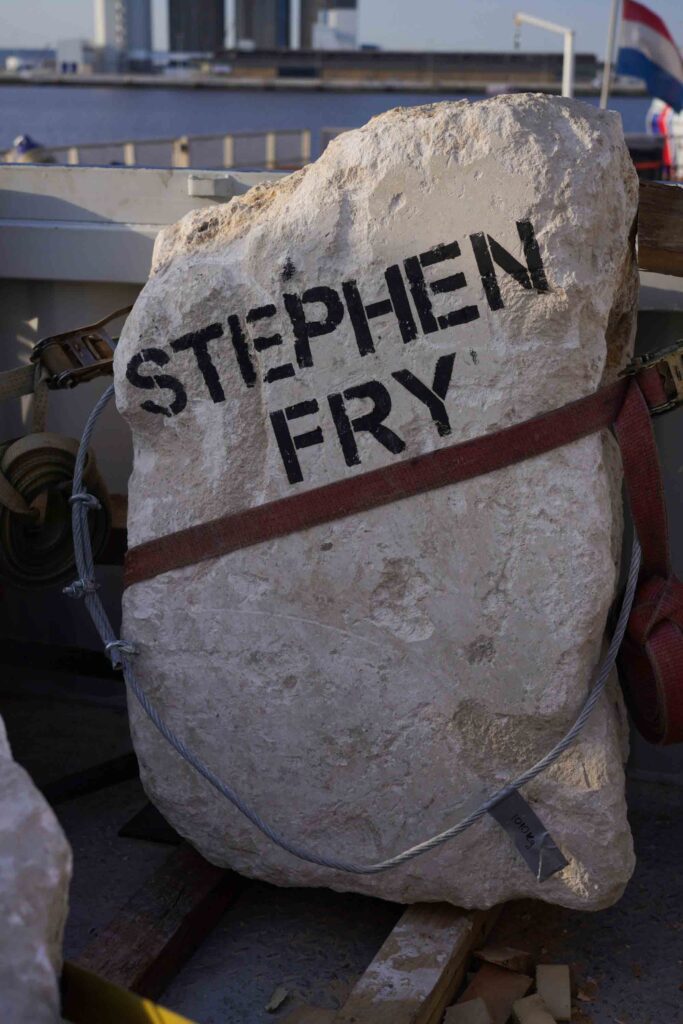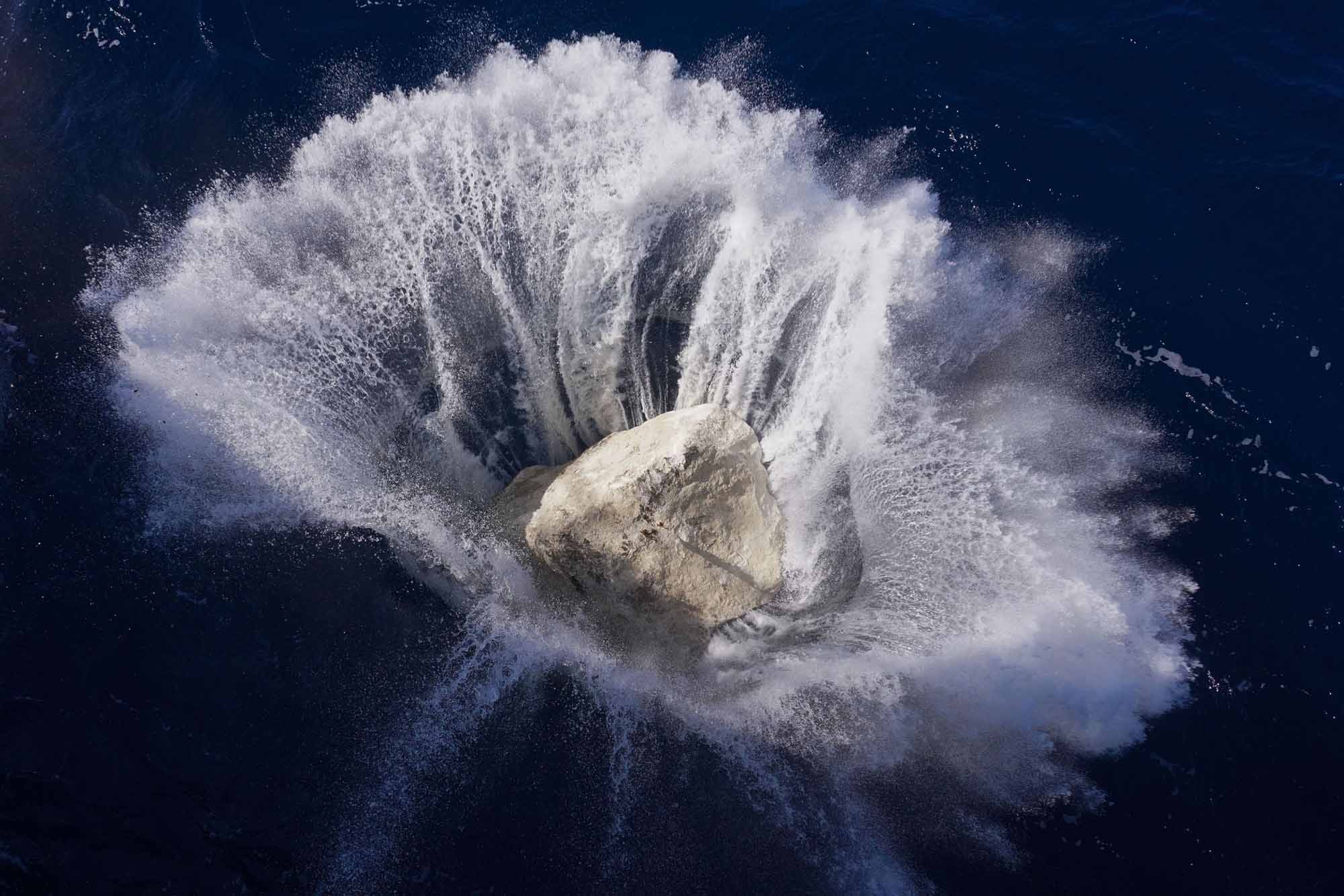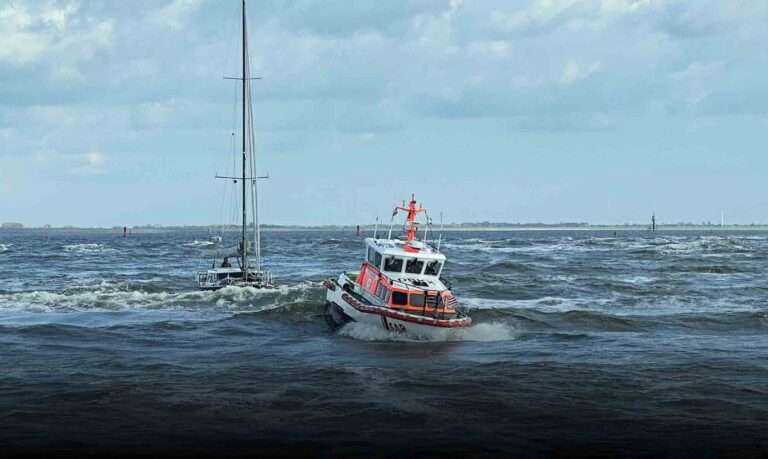Greenpeace UK has placed 18 limestone boulders on the seabed in the western English Channel to block destructive industrial fishing.
On Thursday 1 September, campaigners and crew on board Greenpeace ship Arctic Sunrise sailed to the South West Deeps (East) Marine Protected Area to make a portion of the area off-limits to bottom-trawling.
Greenpeace say the boulder action took place days after UK leaders failed to help secure a Global Ocean Treaty at IGC5 in New York, threatening the Government’s aim to achieve at least 30% ocean protection by 2030.
According to the campaigners: “Across the entirety of the South West Deeps (East) – more than 4,600 km2 – there is not one metre of protection from destructive industrial fishing. It is one of the most heavily fished so-called Marine Protected Areas in the UK.

“In the last 18 months, the South West Deeps experienced almost 19,000 hours of industrial fishing, 3,370 hours of which was bottom-trawling. The majority of industrial fishing vessels in the area were from France (53%) followed by Spain (30%) and Great Britain (9%).”
Celebrities Hugh Fearnley Whittingstall, Simon Pegg, Stephen Fry, and Daniel Lismore are supporting the action, alongside Conservative politicians Henry Smith MP, Sir Peter Bottomley MP and Theresa May’s former Downing Street environment advisor Lord Randall, as well as the Green Party’s Caroline Lucas MP. Their names were stencilled onto the boulders before being dropped into the ocean.
The 18 boulders are Portland limestone, and each weighs between 500kg and 1,400kg. They make it impossible for bottom-towed fishing gear to be dragged along the seabed. Artists from the Portland Sculpture and Quarry Trust created a giant ammonite sculpture out of one of the boulders, which will be placed on the seabed alongside the others. The sculptors took inspiration from the ammonite fossils found in Portland limestone.
Will McCallum, Head of Oceans at Greenpeace UK, said: “Right now, there’s an industrial fishing frenzy happening in UK waters, and what’s our Government doing about it? Greenpeace UK has created this underwater boulder barrier as a last resort to protect the oceans. We’d much rather the Government just did their job.
“It is outrageous that bottom-trawlers are allowed to scrape along the sea bed in most of our Marine Protected Areas every single day. They destroy huge swathes of the marine ecosystem and make a mockery of our so-called ‘protection’.

Story By: Simona Kitanovska, Sub-Editor: Martin M Barillas, Agency: Zenger News
The Ananova page is created by and dedicated to professional, independent freelance journalists. It is a place for us to showcase our work. When our news is sold to our media partners, we will include the link here.




